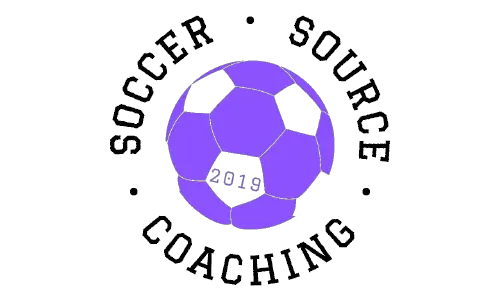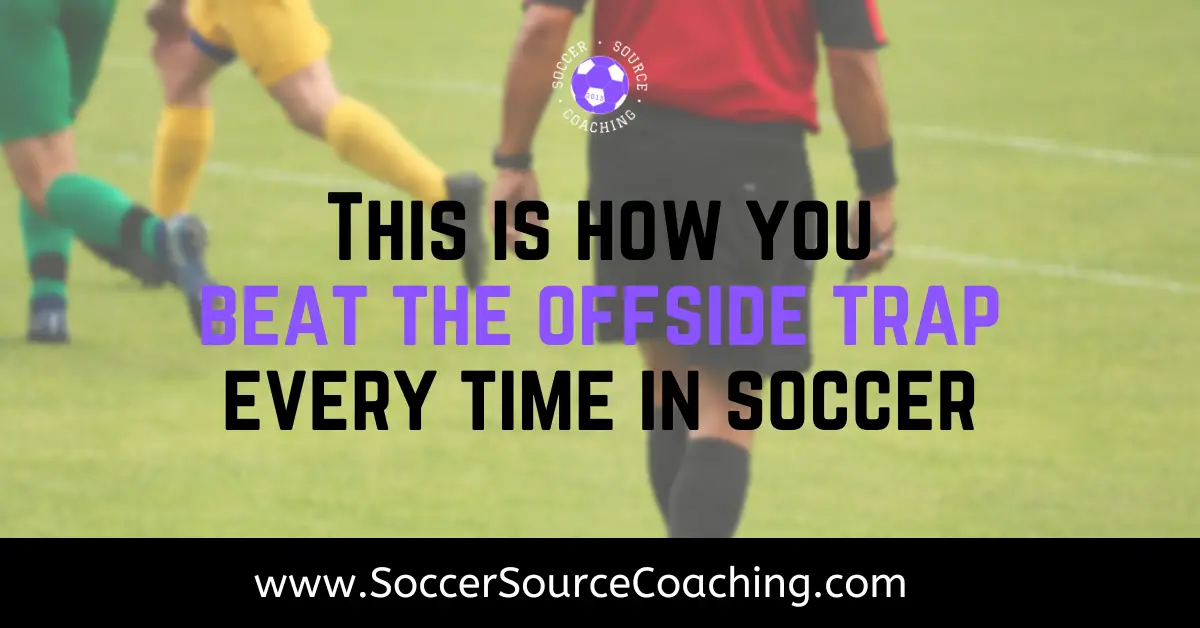Watching as a coach or playing as a player, it can be infuriating being constantly caught offside. Staying onside seems like such a simple task, however, combined with all the moving parts in soccer it can be hard consistently always stay onside. This one-stop guide will give you everything you need on how always to beat the offside trap in soccer
Offsides in soccer simply explained
This is soccer offsides explained:
In soccer, you are offside if the ball is played to you when there is only one opposition player behind you (this includes the goalkeeper) and you make an active attempt to get the ball.
Any part of your body that can play that ball that is past the last defender is classed as offside.
The one exception to this is if you are behind the ball when a pass is played to you.
If you would like a more in-depth explanation of the offside rules these are the official FIFA offside rules
Different examples of being offside in soccer
In soccer, there are a variety of ways that you can get caught in an offside position.
It’s not always as straightforward as it seems, players will often get caught offside or in an offside trap because they aren’t aware of all the rules.
It’s important to you as a player to understand the different ways you can get flagged for offside in soccer.
Here are 6 of the most common examples of being caught offside you need to be aware of
Being beyond the last defender when receiving the ball
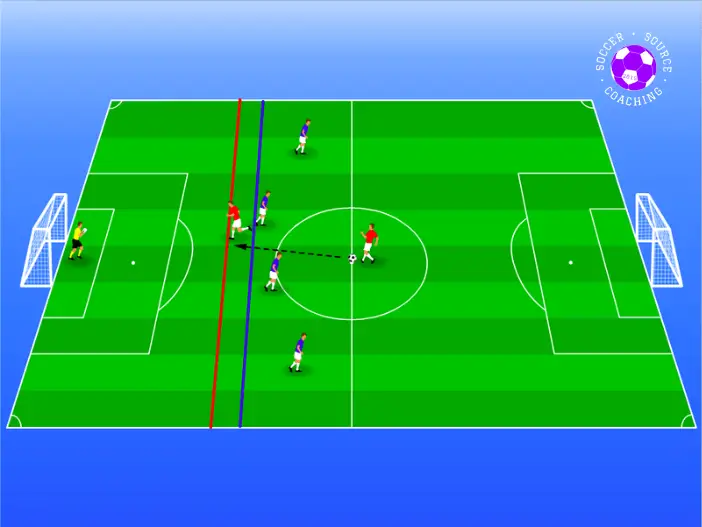
If you are beyond the last defender when a ball is played to you, you are offside. Regardless of whether you touch the ball or not, if you have made a movement towards the ball when it is played then it will get flagged offside
Coming back into an onside position
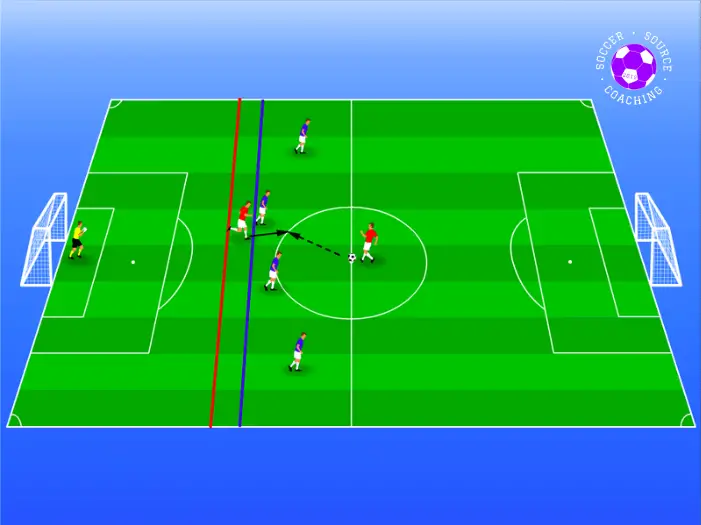
This will sometimes confuse players as to why they get called offside.
Players will start their run behind the first defender and look to receive the ball in front of the defensive line. This causes confusion because their movement is towards their own goal as opposed to moving away from their goal and towards the opponents
Obscuring the goalkeepers’ view
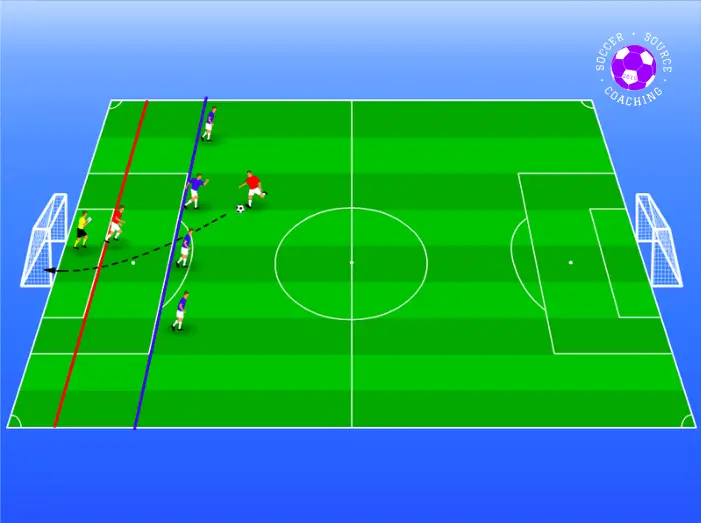
To get called offside in this scenario players do not even have to touch the ball. Players will get called offside if they are intentionally/ unintentionally blocking the keepers’ view when a shot on goal comes in.
Although the player is not touching the ball, they are still indirectly affecting the decision-making of the goalkeeper when they are attempting to save the shot by standing in their line of sight.
Being offside behind the keeper
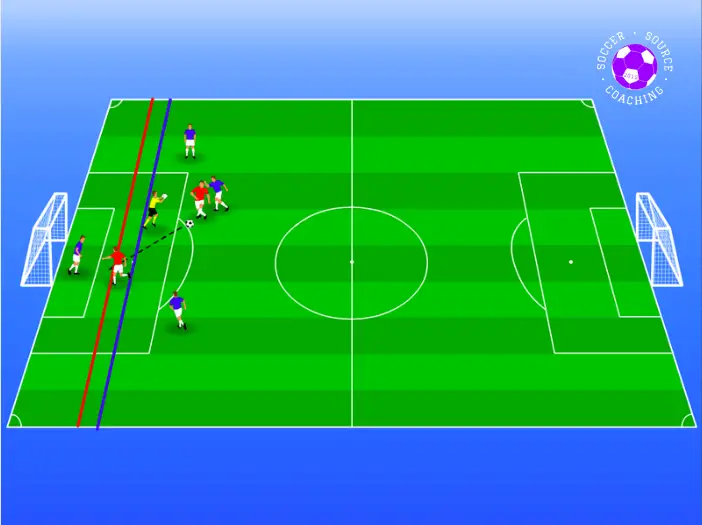
As players, we are usually used to the goalkeeper being the last player back for the opposition team.
However, you can get called offside even if you are in front of the goalkeeper, this often occurs when the goalkeeper comes out to pressure a striker and the defenders come behind the goalkeeper to cover them.
If you are in front of the ball when a pass is played to you with only one opposition player in front of you
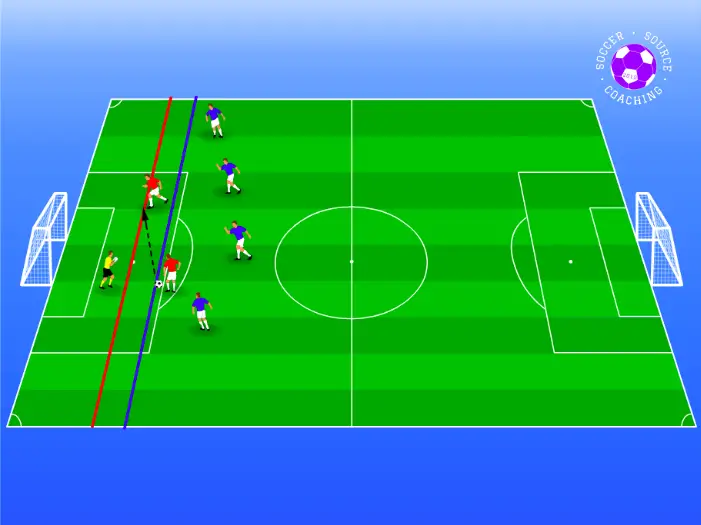
When 2 players are beyond the last defender and are in a 2v1 against the goalkeeper if the player on the ball decides to pass to their teammate who is in front of the ball when the pass is played to them.
The teammate will be called offside.
Getting caught offside from a rebounded shot
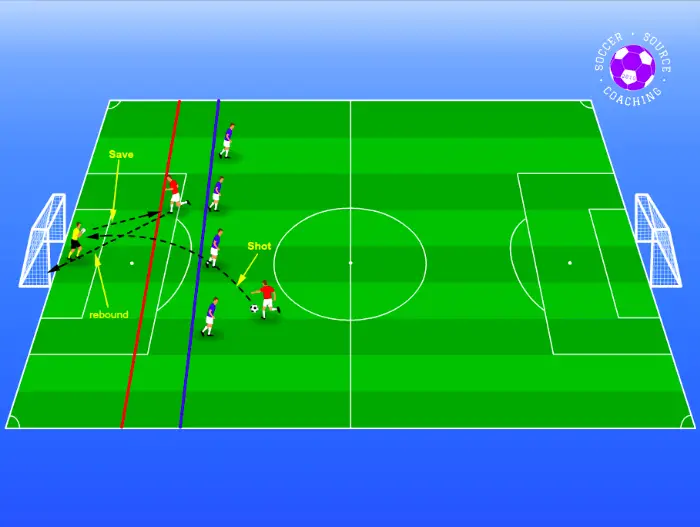
Again, if a teammate has a shot and you are beyond the past defender when the keeper makes a save or the ball comes back of the woodwork for you to tap in you will be classified offside.
Even if you attempt to score and miss!
This is because you have still gained an advantage from standing in an offside position
What is an offside trap in soccer?
The offside trap in soccer is a deliberate attempt from the defensive line to step up just before a pass is played with the intention to catch the opposition player in an offside position, beyond the last defender.
Offside trap soccer examples
In soccer, teams will often implement tactics or strategies to create a successful offside trap.
As a player, it is important to be aware of these tactics and strategies as this will help you how to beat the offside trap in soccer.
Free-kick offside trap
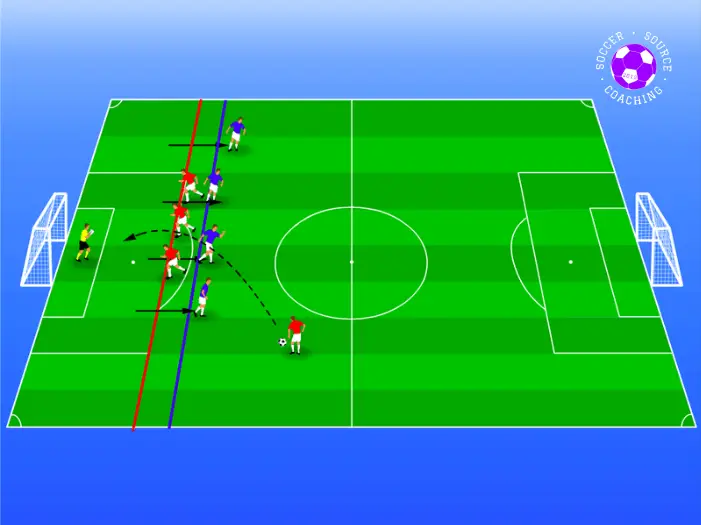
This is one of the most obvious offside traps and is incredibly effective when executed, however, it requires a lot of discipline and trust along the defensive line.
When an attacking free kick comes, the defensive line will quickly step up in unison before the free kick is taken.
This gives a very small window for the attackers running toward the goal to adjust and check their runs to ensure they are in front of the last defender.
Playing with a deeper laying defender
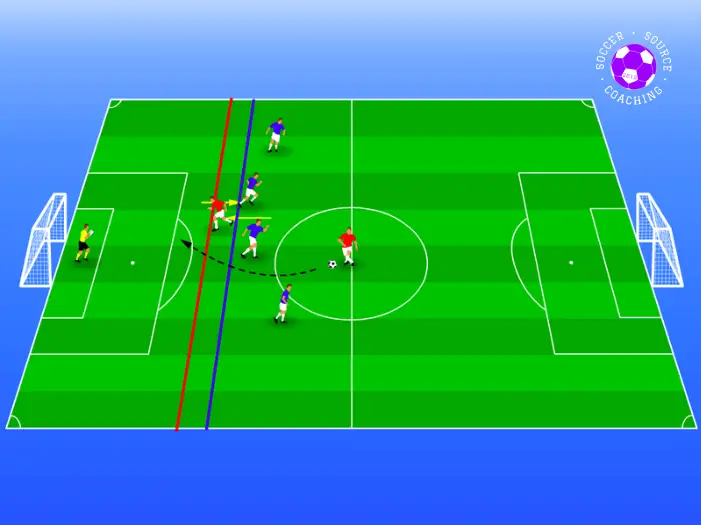
A common role given to one of the center backs in soccer is to be the deepest-playing defender.
This allows the center back to see across the whole backline and quickly step up in anticipation of an opposition player trying to put through their teammate on goal.
The deepest laying center-back will be solely responsible for playing the offside trap across their defensive back line.
By giving one player this responsibility it avoids confusion across the backline.
The rest of the defensive line just has to make sure they are always in front of this player, to ensure a successful offside trap in soccer.
Stepping up when the opposition plays the ball backward
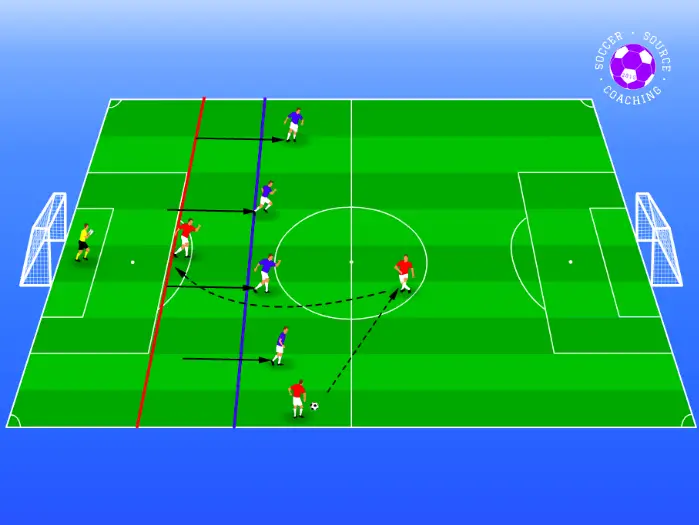
This requires a huge amount of discipline from the whole team and can weeks if not months for a team to master.
The trigger for this offside trap is when the opposition plays the ball back.
Once the ball is played back the defensive line will aggressively step up the pitch roughly equivalent to the same distance the opposition pass traveled back.
This offside trap compresses the play, making it hard for the opposition to play forward.
The offside trap will also catch lagging opposition attackers offside if the ball is forced long as a last alternative from the possessing team.
Is the offside trap risky?
Yes, the offside trap can be risky especially when the defensive teams come up against:
- Smart strikers who make clever movements off the ball
- Teams that play quick, short, combination passes
- Opposition midfielders who make forward runs from deep positions
- Fast attackers
Teams that decide to play with an offside trap must be organized, disciplined, and have great communication across the backline.
This is how you beat the offside trap every time in soccer
Now you know how you can be offside in soccer and which offside traps teams like to implement here are 7 tactics and strategies you can use to greatly increase your chances of staying onside when being put through on goal.
This is how to avoid offsides in soccer
Check your shoulders to avoid being caught in the offside trap
One of the easiest things you can start doing immediately as a player to avoid being caught in an offside trap is to check your shoulders more regularly.
By checking your shoulders more regularly you will become in tune with the defenders’ movements and when they are looking to step up.
Checking your shoulders that little but more frequently will allow you to adjust your movements to keep you in onside positions more frequently.
Encourage your teammates to play the ball through to you earlier
Sometimes as an attacker you made a great bit of movement, lost your defender and all you need is the pass to put you through on goal.
However, the player on the ball doesn’t see you run till late, doesn’t think they can play the ball to you, or waits until they feel a better option appears.
Unfortunately, this gives the defender a chance to step up and it can be hard to adjust your forward momentum and check your run.
Just make sure for the next run you make you’ve made the player on the ball aware of the movements you are making and where you want the ball to play.
This should help speed up their decision-making for next time.
Bending your run to beat the offside trap
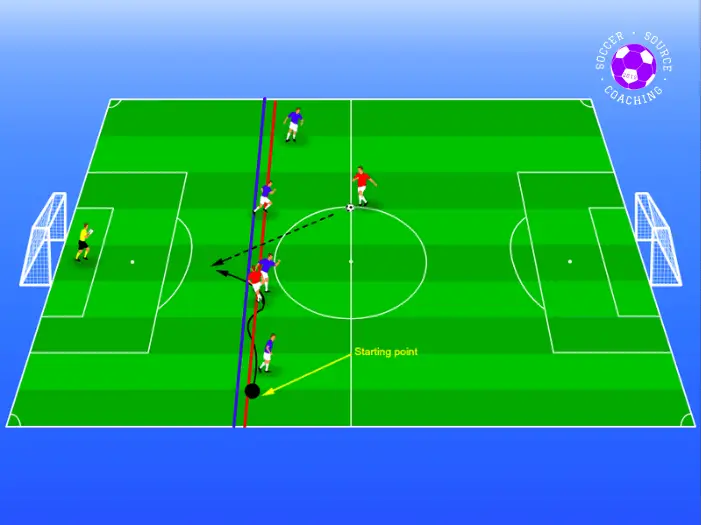
A really effective way to put the offside trap is by bending your runs.
Bending your run in soccer allows you to see across the whole back line so you easily stay onside when the ball is played.
It also allows you to get to top speed quicker when you are put through on goal as you have a ‘rolling start’ on the defender.
To successfully bend your run in soccer you want to peel off into a wide position, this will give you space in the central areas to run into.
Start making you run across the back line a few seconds before you anticipate the ball being played in behind the defensive line.
This type of run will also make you incredibly hard to pick up as you will be running from defenders’ blind spots, giving you an extra advantage.
Beat the offside trap by running from deep
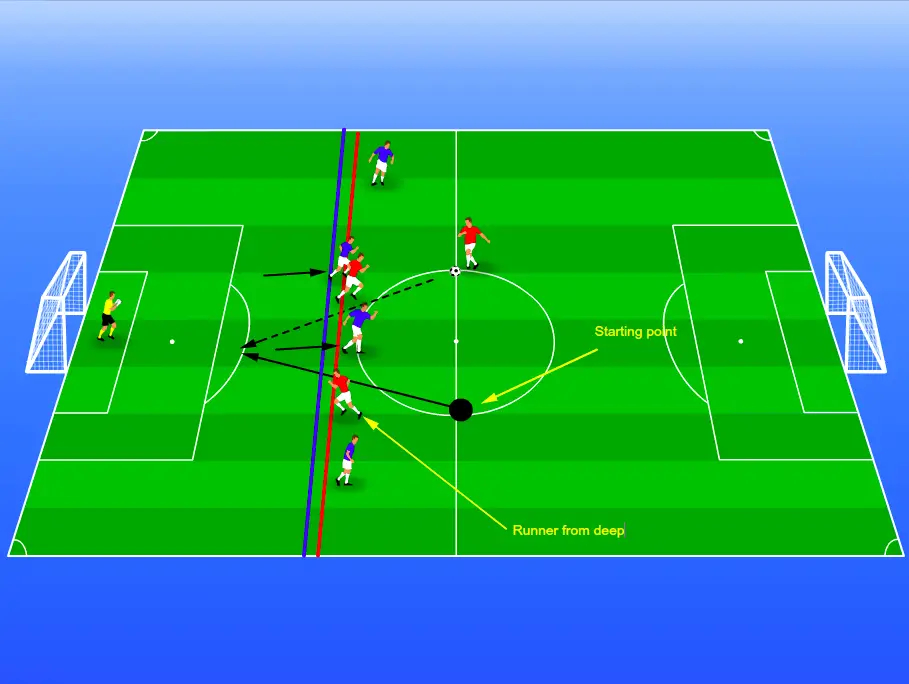
When defenders play an offside trap they are often only concerned with the attackers they are marking.
It is usually the central midfielder’s role to track the runners from deep.
This leaves the door wide open for opposition players to make runs undetected from deep if those central midfielders switch off.
Running from a deeper position allows the players to gain momentum and be at a top speed quicker when the ball is played through to them.
With the defenders stepping up, they will also struggle to adjust their body weight and change direction to compensate for the change of direction to catch up to the midfielder running from deep.
This type of run can also be classified as a 3rd man.
Come in short to go long
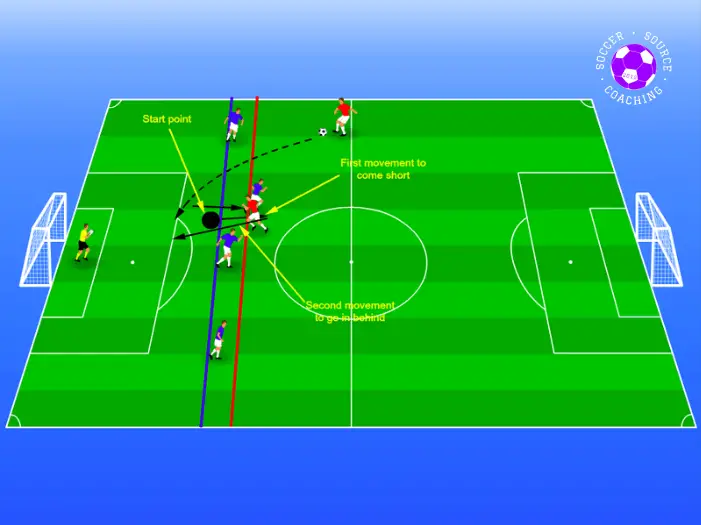
This is a smart movement you can use to create space behind the defender for you to make a run into.
With the first part of this movement, you drag the defender up higher by looking to receive the ball short.
The second part of the movement is where you look to spin in behind the defender into the space that has been created from them pushing up higher to mark you.
By coming in short to receive the ball you will definitely be in front of the defender when the pass is played, guaranteeing you will be in an onside position when the pass is played.
Go long to come short

This is similar to the previous tactic, however, this time you will drag the defender deeper with your first movement and then look to receive the ball in the space in front of the defender.
As well as creating space yourself to receive the ball in front of the defender you will also help benefit your teammates by forcing the defender to play a deeper defensive line.
This will give your teammates making forward runs a greater chance of beating the offside trap as the gap between this defender and the next defender would have increased.
Standing in an offside position without interfering with the play
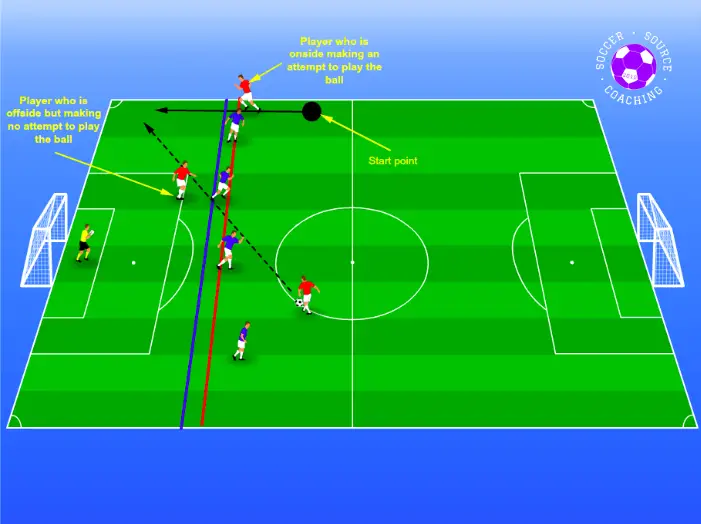
Sometimes you have been caught in an offside trap and there’s nothing you can do about it.
If you find yourself in this situation and you know you’re in an offside position, the best thing you can do is to stand still and make no attempt to go for the ball.
This will sometimes confuse defenders as they appeal for offside but you are not technically offside as you have made no active attempt to win the ball.
The lapse in concentration may allow a player who came from an onside position to continue to make their run and get on the end of the pass.
You can only become active in play again once an opposition player has touched the ball or a teammate who has come from an onside position touches the ball.
Frequently asked questions about the offside trap and offside rules in soccer
Can you be offside from a throw-in?
No, In soccer you cannot be offside from a throw-in in soccer.
What happens if you are offside in soccer?
If you are offside in soccer, an indirect free kick is awarded to the opposition team from where the offside player actively made an attempt to win the ball.
A player never receives a yellow or red card in relation to how many times they are called offside
Can you be offside if you don’t touch the ball?
Yes, you can be offside if you do not touch the ball. If you make an active attempt to win the ball while standing in an offside position when the ball is played you will be called offside, even if you do not touch the ball.
The only exception to this is if you are obscuring the goalkeepers’ view, where even if you make no attempt to win the ball you can still get flagged offside in soccer.
Is it offside if you are behind the goalkeeper?
No, not always. Providing that there are two opposition players behind the goalkeeper at the time of the pass then you will not be offside.
Can you be offside in your own half?
No, you cannot be offside in your own half in soccer
Can you be offside if the ball is played backward?
Yes, you can be offside if the ball is played backward. However, if there is only one opposition player in front of you and your teammate passes you the ball you will be classed as onside providing you are behind the ball when the pass is made, regardless of whether the pass is played in front of you or behind you.
Can you be offside from a corner kick?
No, you cannot be offside from a corner kick.
However, you can get called offside if the ball is played back to the player taking the corner and the defending team step-up.
Can you be offside from a goal kick?
No, you cannot be offside from a corner kick
How to beat the offside trap in soccer conclusion
As well as learning techniques and tactics to use to help you beat the offside trap you have also been equipped with the knowledge of what is actually classified as offside and onside.
You will also have a better idea of the different offside traps teams may try to utilize in the game of soccer and ways to get around them.
If you know someone who would find this post helpful on how to beat the offside trap in soccer then please share it with them using our social media buttons.
If you have any other tips on how to beat the offside trap in soccer then please leave a comment below with your tips!
Thank you,
Toby
Related posts:
- Master the art of how to lose your marker in soccer
- This is how you score more penalty kicks in soccer
- How to be the best striker in soccer
- This is how to be a better winger in soccer
The best way to take your soccer improvement seriously
To see improvement in your overall soccer game you need to constantly push your boundaries.
A player’s work ethic is a strong reflection of how serious they are to get better, however, working hard in the wrong areas can be an individual’s biggest downfall.
Training harder and smarter to optimize your potential has never been easier with the latest advancements in technology.
SoccerBee GPS Wearable Tracker and Vest

The SoccerBee GPS Wearable Tracker and Vest brings cutting-edge technology used by the pros, to the fingertips of aspiring soccer players.
Features include:
- Distance ran
- Top Speed
- Average speed
- Number of sprints
- Heat map
The Fifa-approved technology will pinpoint areas of improvement for your game in competitive and casual matches.
As well as tracking your own stats, you can also compete with your teammates to push each other to be the best they can be
The SoccerBee Lite GPS Wearable Tracker is a cheaper option, however, this will only run the essential metrics.
